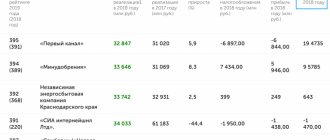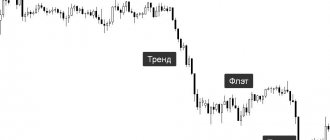What is a financial instrument?
Financial instruments in the international regulations are assigned 3 standards:
- IFRS 32 Financial Instruments: Presentation;
- IFRS 39 Financial Instruments: Recognition and Measurement;
- IFRS 7 Financial Instruments: Disclosures.
All of these standards decipher the term “financial instrument” (FI) as an agreement under which:
- one company acquires a financial asset (FA);
- another company has a financial liability (FO) or an equity instrument (EA).
The standard lists what assets and liabilities are included in FA, FI and DI.
FA is:
- money;
- DI from another company;
- an agreement in which the firm’s own DI (non-derivative or derivative) will be used in the calculations;
- the right (provided for in the contract) to receive money or other FI from another company or to exchange FA or FI with another company on favorable terms.
FO is:
- the obligation arising from the contract to transfer money (or other financial assets) to another company or to exchange financial assets or financial assets with another company on unfavorable terms;
or
- an agreement under which settlements can be made by one’s own DI (derivative or non-derivative).
A DI is an agreement that confirms the right to a residual interest in the assets of a firm after deducting all its liabilities.
IFRS 32 applies to:
- on the classification of FI as FA, FI and DI from the point of view of the issuer;
- classification of dividends, interest, profits and losses;
- conditions for mutual settlement of FA and FO.
The provisions of this standard are mandatory for use by all firms in relation to all types of financial statements (except for those specifically specified in paragraph 4 of IFRS 32).
Definition of derivatives
The Securities Market Law contains a very cumbersome definition of derivatives:
“derivative financial instrument is an agreement (except for a repurchase agreement, as well as an option agreement concluded with an individual in connection with the performance of his labor duties on the basis of an employment contract or in connection with the participation of an individual in the management bodies of a business company), providing for one or more of the following duties:
- the obligation of the parties or parties to the contract to periodically or at a time pay sums of money, including in the event of claims by the other party, depending on changes in prices for goods, securities, the exchange rate of the relevant currency, interest rates, inflation rates, values calculated on the basis of prices derivative financial instruments, values of indicators constituting official statistical information, values of physical, biological and (or) chemical indicators of the state of the environment, from the occurrence of a circumstance indicating failure or improper performance by one or more legal entities, states or municipalities of their duties (for with the exception of a guarantee agreement and an insurance agreement), or other circumstances or other indicators that are provided for by federal law or regulations of the Central Bank of the Russian Federation (hereinafter referred to as the Bank of Russia) and regarding which it is unknown whether they will occur or not, as well as from changes in values calculated for based on one or a combination of several indicators specified in this paragraph. Moreover, such an agreement may also provide for the obligation of the parties or parties to the agreement to transfer securities, goods or currency to the other party, or the obligation to enter into an agreement that is a derivative financial instrument;
- the obligation of the parties or parties on the terms determined at the conclusion of the contract, in the event of a demand by the other party to buy or sell securities, currency or goods, or to enter into an agreement that is a derivative financial instrument;
- the obligation of one party to transfer securities, currency or goods into the ownership of the other party no earlier than the third day after the date of conclusion of the agreement, the obligation of the other party to accept and pay for the specified property and an indication that such an agreement is a derivative financial instrument.”
The legal definition of derivatives in Russian legislation is intended only to outline the range of relevant instruments in order to apply a special legal regulatory regime to them. The domestic legislator did not pursue the goal of giving a clear picture of what relates to derivative financial instruments, and even this would be unnecessary in the conditions of the constantly developing market of financial instruments.
In addition, PFI, being primarily a phenomenon from the field of economics and finance, has already been quite well described and disclosed by economists.
Accordingly, to understand the essence of derivative financial instruments, one should outline their main features, economic purpose, as well as the main types for clarity.
The main features of PFI include:
- Dependence on the underlying asset (the calculation of derivatives will depend on the price of the underlying asset and sometimes the value of derivatives may change following changes in the value of the underlying asset);
- Are not used for the purpose of actual purchase and sale of the underlying assets;
- As a rule, they are transactions aimed at performing certain actions in the future, and not at the time of conclusion.
The main purposes of using derivatives are
Usually the following are distinguished:
- Hedging;
- Receiving a profit.
Hedging or risk insurance is the minimization of risks in a certain market (currency market, commodity market) by fixing the valuation of a certain asset (for example, when a person agrees to sell a product in the future at a certain price, avoiding the risks of selling at a lower price in the event of a price decline for this product).
As for making a profit, they distinguish speculative profit making
and
arbitration
(not to be confused with a legal term!). The first is to make a profit due to the difference in the rates of financial instruments over time (conventionally, today you bought cheaper, and a week later you sold more expensive; the old story about “bulls” and “bears”), and the second is to obtain risk-free profit through the use different prices for the same goods. The simplest example of price arbitrage is a situation where the same assets are traded in different markets at different prices and a person (the arbitrageur) buys assets in a market with lower prices and sells them in a market with higher prices, guaranteed to make a profit in the form of the difference in prices.
It is worth noting that the base (or underlying) asset of
derivatives
, according to the Directive of the Bank of Russia dated February 16, 2015 No. 3565-U “On the types of derivative financial instruments” can be: securities, goods, currency, interest rates, inflation rates, official statistical information , physical, biological and (or) chemical indicators of the state of the environment, contracts that are derivative financial instruments, values calculated on the basis of one or a combination of several of the above indicators.
Derivatives usually include such types of transactions as 1) forward agreement, 2) futures agreement, 3) option agreement, 4) swap agreement (which is also reflected in the Bank of Russia Directive “On the types of derivative financial instruments”). Some economists also include certificates and depositary receipts here.
Essentially, PFI is a type of agreement that contains at least one of the following obligations:
1) the obligation of the parties or parties to periodically pay a certain amount to the other party, which is made dependent on certain conditions (and the conditions can be completely different, from changes in prices for certain goods to changes in weather conditions);
2) the obligation of the parties or parties upon the occurrence of agreed conditions to buy or sell certain assets;
3) the obligation of a party or parties, upon the occurrence of a certain condition, to enter into an agreement, which will be a PFI.
Liabilities and equity
The standard determines that the issuing company of a financial statement is obliged, upon its initial recognition, to classify it (or its component parts) as a financial statement, financial statement or financial statement. The classification is based on:
- the essence of contractual relations;
And
- definitions of FO, FA and DI.
Since in some cases it may be difficult to distinguish between FD and DI, the standard clarifies this nuance separately. When deciding whether FI is FI or DI, it is necessary to check the simultaneous compliance with the following 2 conditions:
- FI does not contain a contractual obligation to transfer money (or other FA) to another company, or to exchange FA (or FI) with another company on conditions unfavorable for the issuer;
- calculations for this FI are carried out using their own DI (non-derivative or derivative).
The simultaneous fulfillment of both conditions means that it is possible to classify the FI as a CI.
Resaleable instruments
FI with the right to resell is the obligation of the issuer (provided for by the contract) to redeem or redeem this FI for money (or in exchange for another FI) when the holder exercises this right.
As an exception, the standard allows the classification of such a FI as a DI if it has a combination of the following properties:
- provides its holder with the right to a share of net assets (NA) upon liquidation of the company;
- does not have priority over other claims on the assets of the company upon its liquidation and does not require prior conversion into another instrument - this means that the FI belongs to a class of instruments subordinated to all other classes of instruments (CI);
- all FIs from CIs have the same characteristics (for example, all FIs of a given class must provide for the right to resell them, and the same formula (method) for calculating redemption or redemption is used for all of them);
- The FI does not provide for any other obligation (except for that provided for in the repurchase agreement or its repayment for money) to transfer money or another FA to another company (or to exchange FA or FI on unfavorable terms) and, at the same time, this FI does not constitute an agreement that is regulated by the firm’s own DI - the issuer;
- The total expected cash flows of the FI during its period of operation are determined based on profit or loss, the change in recognized NA, or the change in the fair value (FV) of the firm's recognized and unrecognized NA.
To classify a FI as a DI, the presence of the above characteristics is not enough - the issuer of this FI cannot have any other FI (or other agreement) that:
- provides for total cash flows, changes in the firm's recognized NAV, or changes in the fair value (FV) of the firm's NAV (recognized and unrecognized);
And
- leads to a significant limitation or fixation of residual income for FI holders with the right to resell.
In certain situations, the standard prohibits a firm from classifying puttable FIs as DIs (paragraph 16B of IAS 32 ).
What are weather derivatives?
As mentioned above, the underlying assets of derivatives may include official statistics, environmental indicators, etc. Such a broad description of underlying assets is due to the fact that in the United States (where, one might say, these instruments appeared and received the main development), so-called “weather derivatives” at one time became popular, that is, derivative financial instruments that made it possible to hedge risks depending on from the weather.
This, at first glance, absurd tool, is of great value for those businesses that directly depend on the weather. At the same time, the immediate conditions for payment by one of the parties under such a contract may be both temperature values (below or above a certain value, for example), and the onset of certain weather phenomena (the onset of frost, snowfall or even a hurricane). All of these events can affect both seasonal business owners (for example, a summer outdoor restaurant will obviously bring in less profit in a year in which the number of warm and sunny days is less than expected) and other industries (weather or unexpected natural phenomena may negatively affect both the supply of goods and directly production). Therefore, in the United States at the end of the last millennium, weather derivatives appeared and became widespread, which, however, are not used so actively in our country.
When does the obligation to transfer your net assets to another company arise?
The obligation to transfer private equity (or their share) to another company upon liquidation of the company may be provided for by some financial institutions. This obligation arises due to:
- the inevitability of the liquidation procedure of the company (for example, a company with a limited period of activity);
- that the FI holder has the right to make a decision on liquidation.
There is an exception to the circumstances described above: a FI with a specified obligation in relation to a private equity upon liquidation is classified as a private financial entity if it has the following characteristics:
- The FI gives its holder the right to a proportionate share in the private equity of the company upon its liquidation. The proportion is determined by dividing the NA into shares of equal size and then adjusted (the resulting value is multiplied by the number of shares available to the FI holder);
- FI belongs to a CI, which means that it does not have priority over other claims on the assets of the company upon its liquidation and does not require conversion into another instrument before it is classified as a CI;
- all FIs related to CIs must contain a provision regarding the identical contractual obligation of the issuing company to transfer a proportional share of its private equity shares upon liquidation.
The standard introduces additional and clarifying nuances to the above conditions (clause 16D IFRS 32 ).
Compound financial instruments
The standard introduces the concept of “composite FI” and considers it in relation to non-derivative instruments.
IMPORTANT! Non-derivative FIs are simple forms of contracts, the value of which is comparable to the value of the contractual obligation.
Examples of non-derivative FIs include:
- credit and loan agreements;
- bills;
- bonds;
- stock.
In relation to non-derivative FI, the standard requires an analysis of its conditions in order to recognize its constituent parts (components) - such elements are subject to separate classification as DF, FA or DI.
An example of such a compound FI is a bond that can be converted by its holder into a certain number of common shares of the company. Such a FI is considered a 2-component firm, consisting of:
- FO (agreement on the transfer of money or other FA);
- DI (a call option that gives its holder the right, during a specific time period, to convert it into a certain number of ordinary shares).
With regard to composite financial statements, the standard provides a rule according to which a company in its statement of financial position (OFP) presents separately the debt and equity components of the financial statements.
In this regard, the question of correct assessment of the components of a composite FI arises. To do this, the initial book value of the FI is distributed as follows:
- a calculation is made: the amount calculated separately for the debt component is subtracted from the CV of the whole FI;
- the calculation result is allocated to the equity component;
- the value of the derivative elements (other than the equity component) embedded in the composite FI is included in the debt component.
After all calculations the identity must be satisfied
BSFI = BSDOLG + BSDOL,
Where:
BSFI - total book value of FI;
BSDOLG and BSDOL - the book value of the debt and equity component of FI
respectively.
No gain or loss arises when these components of a financial statement are initially recognized separately.
Derivatives issues
Firstly, derivatives, being a category that is primarily economic rather than legal, have rather fragmented legal regulation. To get to know them, you need to look at at least:
- Federal Law of April 22, 1996 No. 39-FZ “On the Securities Market”;
- Civil Code of the Russian Federation (articles devoted to option agreements and options; as well as norms devoted to securities);
- Federal Law of November 21, 2011 N 325-FZ “On Organized Trading” (on exchange markets);
- Directive of the Bank of Russia dated February 16, 2015 N 3565-U “On the types of derivative financial instruments.”
Secondly, there is a problem of accurately classifying one or another type of agreement (a specific derivative financial instrument) specifically as ordinary contracts characteristic of civil transactions, and not as bets, since any interests of citizens and organizations within the latter are not protected by law (and rights within the framework of a bet are not subject to protection in court). Today, this problem, in general, is practically absent in practice with respect to conventional derivatives, but new or uncharacteristic derivatives for our market of financial instruments may well encounter it (since some derivatives are based on the condition of the occurrence of an event, the occurrence of which cannot be predicted or it is very difficult, what is similar between such derivatives and betting).
Third, derivative financial instruments have not been well integrated into the current system of contractual and securities regulation. It would seem that what prevents the corresponding agreement (or security) from being classified as one named in the law and at the same time a derivative? It is not entirely clear how the legal regimes of derivatives relate to other legal regimes and whether they can be applied simultaneously.
Despite the existing problems, in general, the derivatives market is one of the most significant (judging by the volume of funds traded on it) markets, providing entrepreneurs with excellent opportunities to reduce risks from unforeseen circumstances in their core activities or representing another category on the stock exchange that allows profit from price fluctuations.
Are treasury shares recognized as part of financial instruments?
A company's own DI (SDI) is not recognized by FIs. In this case, the reason for their ransom does not play any role. In this situation, the standard requires the cost of treasury shares to be deducted from the firm's equity capital (EC).
There is only one exception to the above requirement: if we are talking about the company retaining its private information on behalf of other persons (in the presence of an agency relationship). In this case, such FIs are not included in the company’s general physical financial statements.
The standard determines that a company does not have the right to recognize in profit (loss) the result of the following transactions with private financial assets:
- sale;
- release;
- cancellation.
Such CDIs may be acquired and held by the firm itself (or other members of the consolidated group). The remuneration paid (received) in this situation is recognized directly as part of the insurance system.
Information about treasury shares is disclosed in the general financial statement or in the notes to the financial statements.
To study issues of reporting according to domestic rules, use the materials on our website:
- “Deciphering the lines of the balance sheet (1230, etc.)”;
- “Accounting statements of the organization in 2015-2016”.
Is it worth early adoption of IFRS 9 rules?
IFRS 9 , currently approved in Russia by order of the Ministry of Finance of Russia dated August 26, 2015 No. 133n, today is not yet a mandatory standard for companies. Indeed, according to the text of IFRS 9 , the provisions of the document will become mandatory only from January 1, 2022. Before this date, business entities have the right to be guided in their accounting practices by the requirements of IFRS 9 , but on a voluntary basis.
However, companies should remember that in practice, circumstances may arise in which an early (before 2022) transition to the use of regulatory requirements and IFRS 9 may provide the company with certain advantages (for example, to attract investors).
Thus, the application now, in 2016, of the rules of IFRS 9 , in particular the method of measuring a financial liability at fair value by attributing changes in value to other comprehensive income, can help in a situation where a company intends to take out a loan or issue bonds. Indeed, using the above method of recording changes in value, the company will be able to show a larger amount of profit in reporting, since the amount of change in the value of bonds/loans will be reflected as other income.
PAY ATTENTION! However, this rule is valid only if the change in the credit risk of the obligation does not lead to a disproportion in the accounting of profit and loss. Otherwise, the entire difference in the change in the fair value of the financial liability should be taken into account in profit or loss (clause 5.7.8 of IFRS 9 ).
In addition, the application of IFRS 9 can significantly affect the reporting of a company if it owns equity financial instruments. After all, the standard that was in force before IFRS 9 (IFRS 39) required that such instruments be reported at actual cost (paragraphs 46c, 66 of IFRS 39). And if during the year there was a change in their assessment, then:
- negative dynamics were included in the company's loss;
- the value of the financial instrument that increased in the period following the loss was not reflected (i.e., the loss was not restored).
Now, after the transition to IFRS 9 , the company must report all equity instruments at fair value. And the change in such value should be attributed either to the profit/loss of the company or to other income. Therefore, if the company chooses the first option, it will turn out that equity instruments, previously recorded at cost, will now be revalued and significantly affect the company’s profit. Which can also have a positive effect on the formal investment attractiveness of such a business.
PAY ATTENTION! In addition to the above, organizations should keep in mind that many provisions of IFRS 9 will have to be applied retrospectively, that is, extend their effect not only to future periods, but also to past ones.
In particular, paragraph 7.2.3 of IFRS 9 requires that the company decide from the very beginning whether it is going to hold a financial asset (in order to receive a profit in the form of its cost and interest) or not (in order to profitably sell this instrument, thereby receiving not only the cost of the debt and interest, but also an additional premium). After all, the accounting option depends on this: at amortized cost or at fair value, respectively. Therefore, if a company has decided on the classification of an asset, say, for 2016, and the asset was acquired in 2015, the value of such an asset should be revised for 2015 as well.
In addition, companies may also be interested in questions regarding the reporting of the company's revenue in accordance with IFRS requirements. More details about this in the article “IFRS No. 18 Revenue - application features (nuances)”.
How to account for interest and dividends related to a financial instrument?
In accordance with paragraph 35 of IAS 32 , FI-related dividends, interest, and gains and losses are accounted for as income or expenses in profit or loss.
The standard prescribes:
- Amounts distributed to DI holders should be taken into account directly as part of the insurance company;
- expenses on a transaction related to the insurance company are included in the reduction of the insurance company.
For example, non-cumulative preferred shares are subject to mandatory redemption in exchange for cash after 3 years, and dividends on them are paid at the discretion of the firm until the date of such redemption. Such a FI is considered composite, in which the debt component is equal to the present value of the repayment amount.
In this case:
- amortization of the discount on this component is classified as interest expense and recognized in profit (loss);
- Dividends paid are allocated to the equity component and are recognized as a distribution of profit (loss).
However, if part of the dividends is not paid, but is added to the redemption amount (based on a change in the underlying variable - for example, a commodity) - the entire FI is a liability, and all dividends are classified as interest expense.
Classification of derivatives
Derivative financial instruments can be divided depending on the underlying (underlying) asset into:
- commodity derivatives;
- foreign currency derivatives;
- interest-bearing derivatives;
- stock derivatives (here the assets are securities, as well as stock indices);
- credit derivatives;
- insurance derivatives;
- weather derivatives;
- etc.
Depending on the circulation market, derivatives can be divided into:
- those that are traded on the stock exchange (exchange instruments);
- those that are traded outside the exchange (over-the-counter instruments.
Depending on the method of execution of derivatives, we can distinguish:
- derivatives for which execution is recognized as the delivery of the underlying asset (that is, this is the transfer of not only rights, but also the transfer of goods, securities, or other assets in tangible form, if possible);
- derivatives-settlement instruments (the underlying asset as such is not delivered, but settlements occur between the parties - transfers of funds - depending on the conditions);
- Pension funds in accordance with which it is necessary to perform other actions (usually enter into a contract).
Also, derivatives can be divided depending on the purpose of use into those that are designed to hedge risks and those that are concluded for the purpose of extracting (speculative or risk-free) profit.
Offsetting financial assets and liabilities
The standard determines that FA and FO are subject to offset with the presentation of a net amount in the FPP only if the company:
- has a currently valid legal right to such set-off; And
- intends to simultaneously implement the FA and execute the FO, or carry out settlements on a net basis.
It is impossible to offset a transferred asset and its corresponding liability if the accounting reflects the transfer of an asset that does not meet the criteria for derecognition.
Results
IFRS 32 deals with one of the most complex accounting elements - financial instruments.
Information about a firm's financial assets and liabilities, as well as its equity holdings, is of high value to users of financial statements because it helps them reliably assess the firm's financial position, results of operations, and cash flows. You can find more complete information on the topic in ConsultantPlus. Free trial access to the system for 2 days.
How to choose an insurance company
When choosing an insurance company, you must take into account that many programs are long-term, so carefully check their reliability and financial stability.
- Find out the history of the company. How many years has it been on the market, reliability rating.
- Check the company's insurance license.
- Check out the register of insurers on the website of the Bank of Russia financial markets service. This site has a lot of useful information about insurers. Supervision is carried out by the Central Bank of Russia.
- Find out the amount of the company's authorized capital (minimum - 240 million rubles). Pay attention to the level of fees and disbursements.
- Don't forget that there is reinsurance protection in insurance. Check out companies that reinsure risks. Because in the event of bankruptcy, payments are made by reinsurers.
- Check the reserve amount. Insurance companies are required to form reserves in amounts that guarantee the full fulfillment of obligations to policyholders. That is, if all clients come on the same day for payments, the money is paid from the reserve. The amount of the reserve is reflected in the reporting.
- Review financial statements for transparency. Firstly, it must be presented on the company's website. Secondly, it should contain information about profitability for previous periods.
- Rate the company's website. Personal account, interface.
- See what awards the company has.
- Read reviews about the company online.
- To make a final decision, visit the offices of several insurance companies:
- request calculations and contractual terms, compare them;
- evaluate the level of service and competence of the staff.










